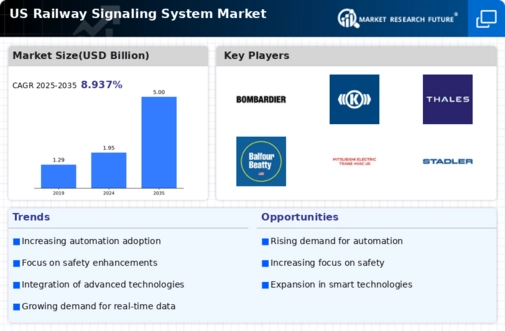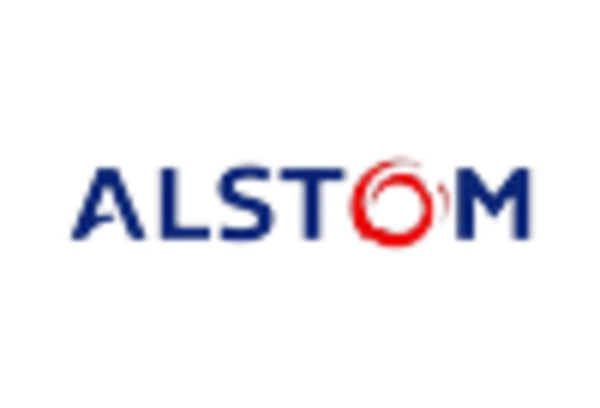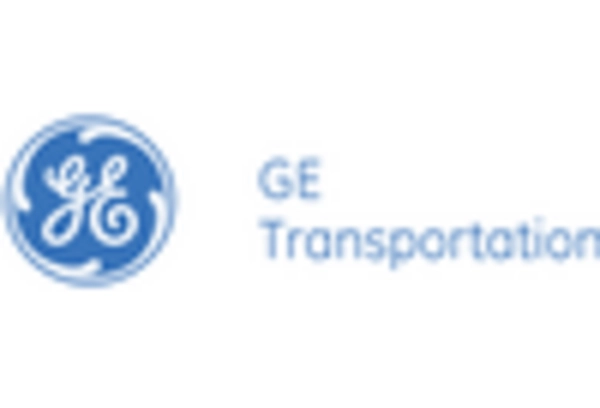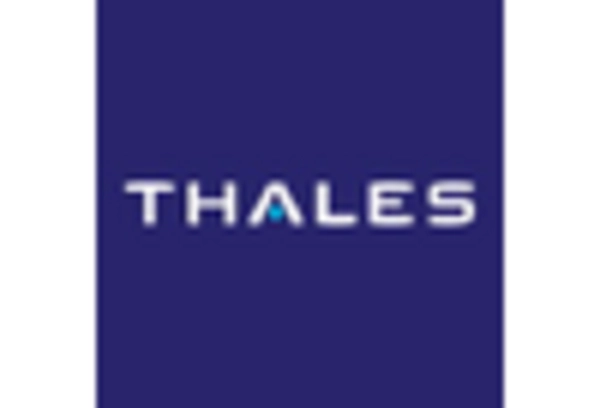Growing Demand for Safety and Security
Safety and security concerns are paramount in the railway signaling-system market, driving the adoption of advanced signaling solutions. With increasing incidents of accidents and safety breaches, there is a heightened focus on implementing systems that enhance operational safety. Regulatory bodies are advocating for stricter safety standards, which necessitate the integration of advanced signaling technologies. The market is likely to see a surge in demand for systems that offer features such as automatic train protection and real-time monitoring. This trend is expected to contribute to a market growth rate of around 7% annually, as operators prioritize safety enhancements to protect passengers and cargo alike.
Increased Investment in Infrastructure
The railway signaling-system market is benefiting from increased investment in infrastructure across the United States. Federal and state governments are allocating substantial funds to modernize rail networks, which includes upgrading signaling systems. The Infrastructure Investment and Jobs Act has earmarked billions for rail improvements, emphasizing the importance of safety and efficiency. This influx of capital is expected to drive the adoption of modern signaling technologies, which are essential for accommodating higher traffic volumes and improving safety standards. As a result, The market is projected to witness robust growth. Investments in signaling systems are expected to account for a significant portion of overall rail infrastructure spending in the coming years.
Urbanization and Increased Rail Traffic
The railway signaling-system market is significantly influenced by urbanization trends and the resultant increase in rail traffic. As urban areas expand, the demand for efficient public transportation systems rises, leading to greater reliance on rail networks. This surge in rail traffic necessitates the implementation of sophisticated signaling systems to manage operations effectively. The market is projected to grow as cities invest in rail infrastructure to accommodate this demand. It is estimated that urban rail systems will require a 15% increase in signaling capacity over the next decade to handle projected passenger growth. Consequently, the railway signaling-system market is poised for expansion as cities seek to modernize their rail operations.
Environmental Regulations and Compliance
Environmental regulations are increasingly shaping the railway signaling-system market, aiming to reduce the carbon footprint of rail operations. As governments enforce stricter emissions standards, rail operators are compelled to adopt more efficient signaling systems that minimize energy consumption. The transition to greener technologies is not only a regulatory requirement but also a market differentiator. Investments in energy-efficient signaling solutions are expected to rise, with projections indicating a potential market growth of 6% annually as operators seek compliance and sustainability. This trend reflects a broader commitment to environmental stewardship within the railway sector, positioning the signaling market as a critical component in achieving sustainability goals.
Technological Advancements in Signaling Systems
The railway signaling-system market is experiencing a notable shift due to rapid technological advancements. Innovations such as automated signaling, real-time data analytics, and enhanced communication systems are transforming operational efficiency. The integration of Internet of Things (IoT) technologies is enabling predictive maintenance, which can reduce downtime and improve safety. According to recent estimates, the market for advanced signaling technologies is projected to grow at a CAGR of approximately 8.5% over the next five years. This growth is driven by the need for more reliable and efficient rail operations, which is crucial for meeting increasing passenger and freight demands. As rail networks expand, the adoption of these advanced systems is likely to become a key focus for operators looking to enhance service quality and operational reliability.

















Leave a Comment